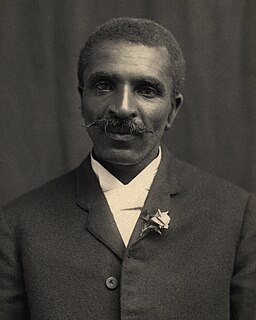
George Washington Carver was an American agricultural scientist and inventor who promoted alternative crops to cotton and methods to prevent soil depletion. He was the most prominent black scientist of the early 20th century.

Landscape architecture is the design of outdoor areas, landmarks, and structures to achieve environmental, social-behavioural, or aesthetic outcomes. It involves the systematic design and general engineering of various structures for construction and human use, investigation of existing social, ecological, and soil conditions and processes in the landscape, and the design of other interventions that will produce desired outcomes. The scope of the profession is broad and can be subdivided into several sub-categories including professional or licensed landscape architects who are regulated by governmental agencies and possess the expertise to design a wide range of structures and landforms for human use; landscape design which is not a licensed profession; site planning; stormwater management; erosion control; environmental restoration; parks, recreation and urban planning; visual resource management; green infrastructure planning and provision; and private estate and residence landscape master planning and design; all at varying scales of design, planning and management. A practitioner in the profession of landscape architecture may be called a landscape architect, however in jurisdictions where professional licenses are required it is often only those who possess a landscape architect license who can be called a landscape architect.

Tuskegee University is a private, historically black land-grant university in Tuskegee, Alabama. The campus is designated as the Tuskegee Institute National Historic Site by the National Park Service. The university was home to scientist George Washington Carver and to World War II's Tuskegee Airmen.

Hampton University is a private, historically Black, research university in Hampton, Virginia. Founded in 1868 as Hampton Agricultural and Industrial School, it was established by Black and White leaders of the American Missionary Association after the American Civil War to provide education to freedmen. The campus houses the Hampton University Museum, which is the oldest museum of the African diaspora in the United States and the oldest museum in the commonwealth of Virginia. First led by former Union General Samuel Chapman Armstrong, Hampton University's main campus is located on 314 acres in Hampton, Virginia, on the banks of the Hampton River.

Paul Marvin Rudolph was an American architect and the chair of Yale University's Department of Architecture for six years, known for his use of reinforced concrete and highly complex floor plans. His most famous work is the Yale Art and Architecture Building, a spatially-complex Brutalist concrete structure. He is one of the modernist architects considered an early member of the Sarasota School of Architecture.
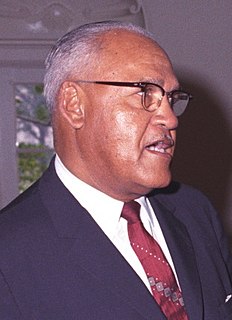
Frederick Douglass Patterson was an American academic administrator, the president of what is now Tuskegee University (1935–1953), and founder of the United Negro College Fund. He was a 1987 recipient of the Presidential Medal of Freedom, the nation's highest civilian honor, and 1988 recipient of the Spingarn Medal from the NAACP.
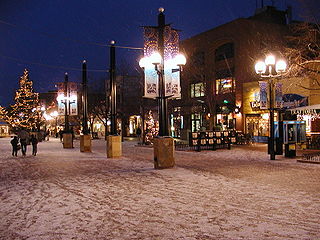
Hideo Sasaki was a Japanese American landscape architect.

Robert Robinson Taylor was an American architect and educator. Taylor was the first African-American student enrolled at the Massachusetts Institute of Technology (MIT), and the first accredited African-American architect when he graduated in 1892. He was an early and influential member of the Tuskegee Institute faculty.
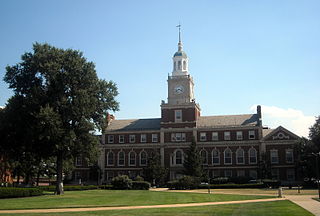
Albert Irvin Cassell (1895–1969) was a prominent mid-twentieth-century African-American architect in Washington, D.C., whose work shaped many academic communities in the United States. He designed buildings for Howard University in Washington D.C., Morgan State University in Baltimore, and Virginia Union University in Richmond. Cassell also designed and built civic structures for the State of Maryland and the District of Columbia.

The George Washington Carver Museum is a museum located in Tuskegee, Alabama, United States. It is a part of the Tuskegee Institute National Historic Site. The museum, located on the campus of Tuskegee University, is managed by the US National Park Service, with self-guided tours.

The Lowthorpe School of Landscape Architecture is the shorthand name for a school that was founded in Groton, Massachusetts in 1901 for women to be trained in landscape architecture and horticulture. Under its original name of Lowthorpe School of Landscape Architecture, Gardening, and Horticulture for Women, the college was one of the first in the world to open the profession to women. In 1915 it was renamed the Lowthorpe School of Landscape Architecture for Women, and in 1945 it was absorbed into the Rhode Island School of Design as the Lowthorpe Department of Landscape Architecture.
Bryant Fleming was an American architect and landscape architect.
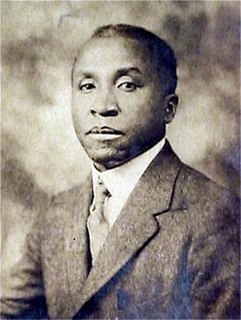
Walter Thomas Bailey was an American architect from Kewanee, Illinois. He was the first African American graduate with a bachelor of science degree in architectural engineering from the University of Illinois at Urbana-Champaign and the first licensed African-American architect in the state of Illinois. He worked at the Tuskegee Institute, and practiced in both Memphis and Chicago. Walter T. Bailey became the second African American that graduated from the University of Illinois.

Langston Terrace Dwellings are historic structures located in the Langston portion of the Carver/Langston neighborhoods in the Northeast quadrant of Washington, D.C. The apartments were built between 1935 and 1938 and they were listed on the National Register of Historic Places in 1987.
University of Minnesota College of Design is located on both the Saint Paul and Minneapolis campuses of the University of Minnesota-Twin Cities. The College of Design includes the full range of design disciplines and is home to eight undergraduate majors in the fields of architecture, apparel design, graphic design, interior design, landscape architecture, product design, and retail merchandising. There are 23 graduate degree programs, eight undergraduate minors, nine research centers, and the Goldstein Museum of Design.
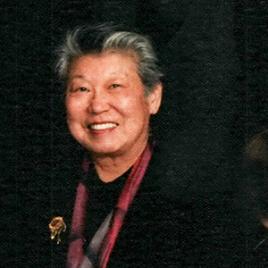
Mai Haru Kitazawa Arbegast (1922–2012) was an American landscape architect, and professor based in Berkeley, California. She was a professor in the Department of Landscape Architecture at Berkeley. She was the first acting director Blake Garden after its gift to the UC Berkeley Department of Landscape Architecture . As a professional landscape architect who specialized in planting design and her work included estates, wineries, and large scale residential gardens, as well as public, commercial, and educational projects. Projects of note include the Hearst Castle planting restoration, California Palace of the Legion of Honor renovation, and the UC Davis Arboretum.
Mabel Keyes Babcock was one of America's early women landscape architects. She taught at Wellesley College and the Lowthorpe School of Landscape Architecture before going on to become Dean of Women Students at the Massachusetts Institute of Technology.
African-American architects are those in the architectural profession who are members of the African diaspora in the United States.

Bess Bolden Walcott (1886-1988) was an American educator, librarian, museum curator and activist who helped establish the historical significance of the Tuskegee University. Recruited by Booker T. Washington to help him coordinate his library and teach science, she remained at the institute until 1962, but continued her service into the 1970s. Throughout her fifty-four year career at Tuskegee, she organized Washington's library, taught science and English at the institute, served as founder and editor of two of the major campus publications, directed public relations, established the Red Cross chapter, curated the George Washington Carver collection and museum and assisted in Tuskegee being placed on the National Register of Historic Places.















